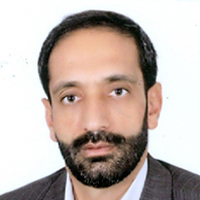Analysis of spatial relationship between vegetation and surface ozone distribution with emphasis on the precursor role of isoprene in different areas of Tehran metropolis
The release of isoprene from plants is the largest known source of non-methane volatile organic compounds in the world, indicating a direct transfer of carbon and a reaction of plants to the atmosphere. It is estimated that more than 90% of isoprene emissions from plants occur during peak hours of photosynthesis (11 to 20). Given that isoprene is an ozone precursor and its direct effect on ozone release is further determined in the biosphere; the main purpose of this study is to identify the generating areas of this pre-pollutant in vegetated areas by monitoring tropospheric ozone data. Ozone data were prepared from air pollution measuring stations and monitoring stations of the Environment Organization from 2002 to 2018, and after producing the NDVI map of Tehran, an analysis based on the correlation method between variables was performed. The results showed that from 11 to 20 o'clock in areas where the vegetation index is higher within a radius of one kilometer of each station, the amount of emitted ozone is higher and there is a significant relationship between the two, indicating the production of isoprene by the dominant tree and shrub species. در is in such areas. Isoprene is mainly produced from fast-growing trees such as spruce, willow, eucalyptus, acacia, sycamore, etc., which can increase ozone pollution in the earth's surface; Therefore, before developing a new green space, the municipalities of different areas of Tehran metropolis are recommended to accurately identify the species suitable for the urban environment and the effect of their pollution in a completely scientific manner and, if necessary, plant such trees in some areas. Assume that they are not exposed to isoprene production catalyst conditions.
Isoprene , air pollution , Ozone , Vegetation , NDVI
-
Assessment of the Geomorphodiversity of the Lut Desert
Mohsen Pourkhosravani *, , Zahra Dareh Kordi
Geographical Planning of Space Quarterly Journal, -
Monitoring of the Rafsanjan City Subsidence and Its Possible Causes
A. Mehrabi*, S. Karimi, A. Mohammadi Lahijani
Geographical Research, -
Co-citation analysis of the concepts of hazard, human and environment from 1985 to 2020
Hossein Ghazanfarpor, Mohsen Pourkhosravani *, Taibeh Mahmoodi Mohammadabadi
Journal of Environmental Hazard Management, -
Analyzing spatial inequality in the city of Kerman using spatial statistics
Hanieh Ali Mirzaei *, AliAsghar Abdullahi, Hossein Ghazanfarpur
Urban Areas Studies,



